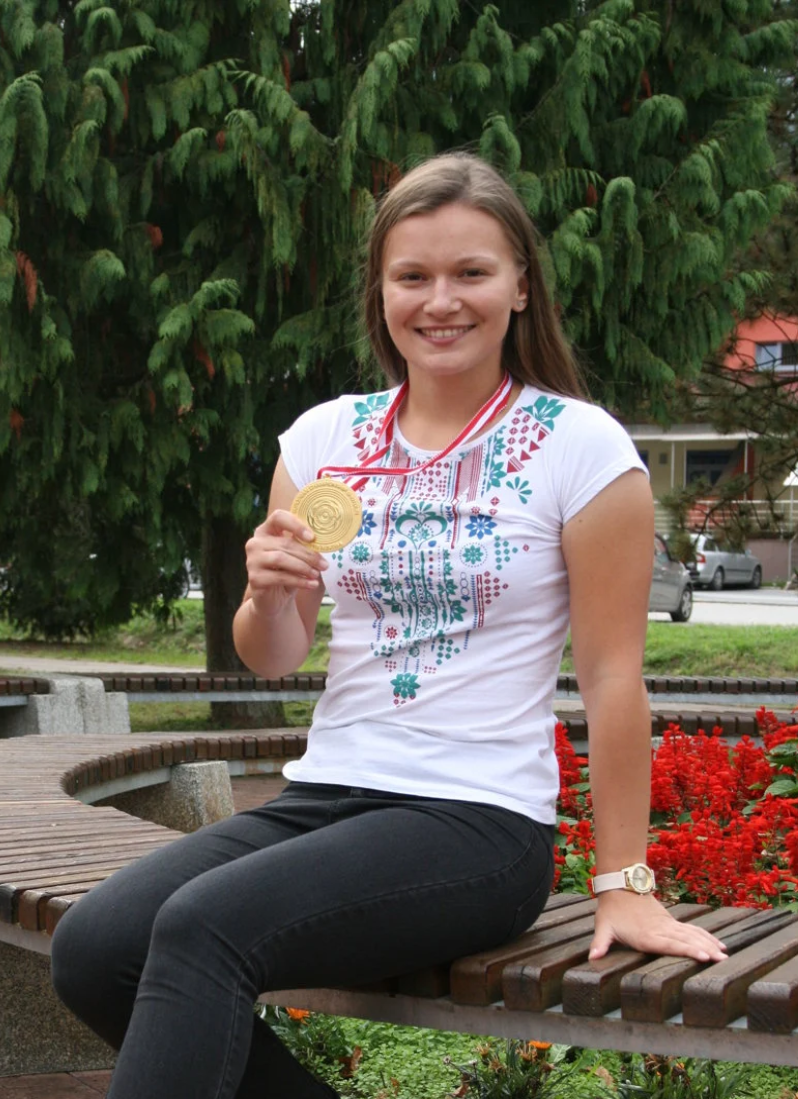Can the sport be linked with science? You can find the answer in an inspiring interview with our PhD. student Ing. Lucia Kopčanová from the Division of Microstructures of Surfaces and Interfaces, who, in addition to her doctoral studies, also excels in skeet shooting.
Now you can boast about the new success you brought from the European Championship in Cyprus. What are your impressions of the competition?
Together with shooters Danka Barteková and Vanesa Hocková, we fought for the bronze medal with the Olympic champions from Italy, whom we successfully defeated, even though it was very difficult at the beginning of the competition. I was mainly worried about the high temperatures in Cyprus, where it was around 38°C every day. At the beginning of the qualification, I had a lot of trouble with the targets, where I made a lot of technical mistakes, but luckily the girls in the team encouraged me and we worked our way up to the bronze bar. It was a well-deserved success for a job well done.
How did you get into sports shooting?
I was hunting from a young age. I loved going to the forest with my father, who was a hunter. When I was 15, I signed up for a hunting course to become a huntress. After completing the hunting and shooting tests, I was clear in which direction I would go. I chose shotgun shooting, which is still my hobby today. Over time, I became a part of the Slovak national team in sporting shotgun shooting.
What are you currently doing these days?
I currently work at the Institute of Materials and Machine Mechanics SAS (IMSAS) in Bratislava as a Ph.D. student. During my studies, I will deal with an interesting project, which is also part of my dissertation. Specifically, it will be the study of the dual laser beam and its effect on the welded joints of duplex steels. The collective at IMSAS provides me with excellent conditions for studying. I gain gradual experience in the research analysis of metallic, non-metallic, or other advanced materials. The advantage of studying at IMSAS is the availability of modern laboratories and rapid acquisition of practice for the future.
What will the research on the dual laser beam and its effect on the weld joints of duplex steels be about?
The main goal of the project will be the research of metallurgical processes and structural transformations of duplex steels. We will try to achieve the optimal ratio of austenite and ferrite (50/50) using a dual laser beam. With the TWIN SPOT module, the beam is divided into two parts, and when the second laser beam passes through during welding, we achieve reheating, which slows down the cooling of the duplex steel. In this way, we prevent deformation and an unfavorable ratio of austenite and ferrite.
How can studying for a doctoral degree be connected with the career of a top athlete?
It takes a lot of determination and self-denial to do it. Everything is possible when a person has the desire and especially the passion for work. Many times it depends on the agreement between the student, the school, and the sports institution on how they mutually establish the conditions for the fulfillment of duties. For example, some schools cannot or rather do not want to allow it. I don't think that an athlete should remain just an athlete. In my opinion, an athlete should be a complex person, that is, he should have a full-fledged education just like a non-athlete. I would like to thank the IMSAS for the support and space to study even during a sports career.
Profile:
Ing. Lucia Kopčanová - representative in skeet shooting - medalist from the European Championships and World Cups in the team competition from 2018 to 2022 - doctoral student at IMSAS.
